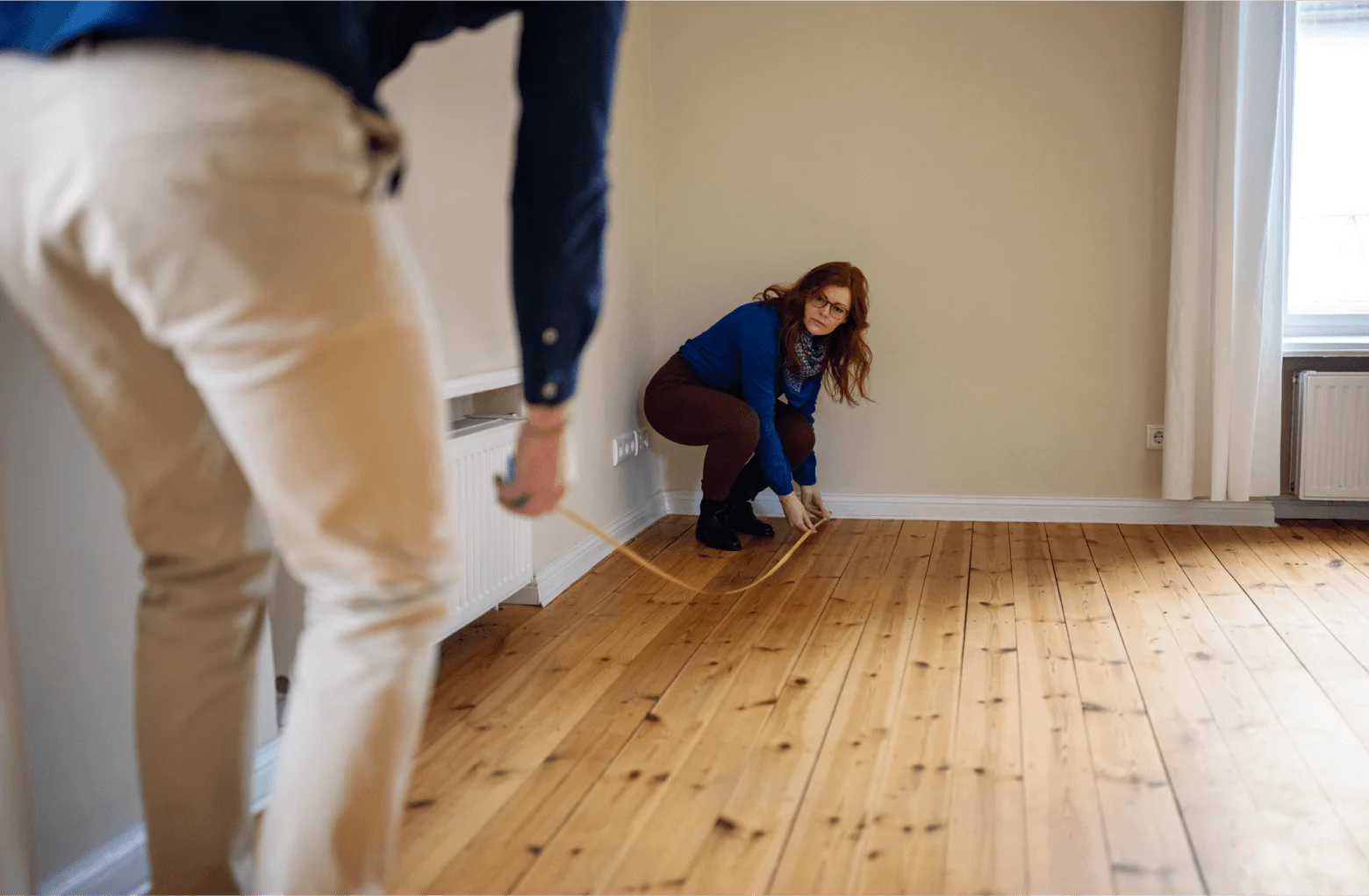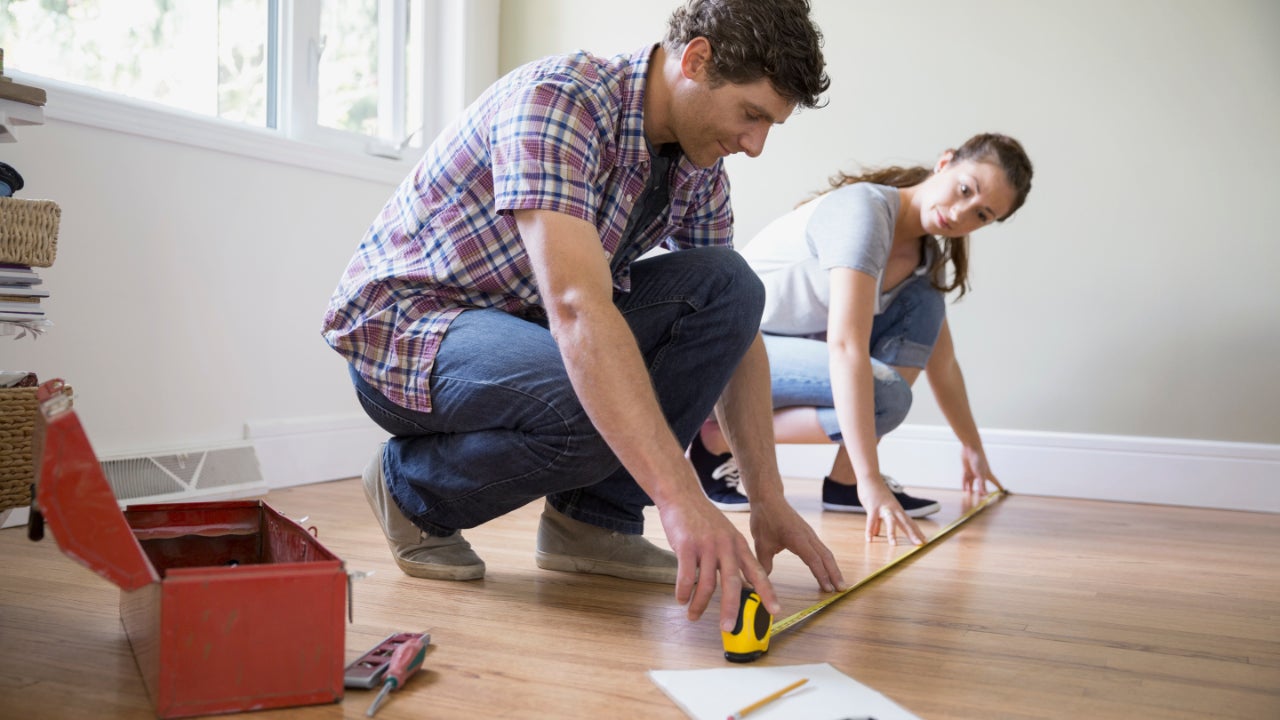When it comes to houses, whether you hope to buy, aim to sell, or simply live in one, you cannot help thinking about hundreds of issues. Prices, realtors and potential options, possible renovations, moving, amenities, and much more. In this whirlpool of thoughts, some are more important than others, but you’ve probably never concerned yourself with the square footage of a property.
Don’t flip out, but we’re here to tell you that maybe you should!
Calculating the square footage of a property can significantly impact the property’s value, appraisal, and legal standing. Whether you’re a homeowner, real estate investor, or someone in the market for a new property, understanding square footage is crucial for making informed decisions. And in this blog, we’ll show you just how easy it is!
Table of Contents
How to Calculate the Square Footage of a House?
Measuring the square footage of a property requires careful attention to detail and the use of appropriate methods. Depending on the property’s layout and complexity, you can adopt different approaches.
Stick to basics with a tape measure
This method is suitable for properties with straightforward layouts and regular shapes.
- Draw a floor plan of the property, including all rooms and spaces.
- Measure the exact length and width of each room using a tape measure.
- Multiply “the length by the width” for each room to calculate its area in square feet.
- Add up the areas of all rooms to obtain the total square footage of the property.

Divide & conquer
This method is ideal for properties with irregular shapes or spaces that are challenging to measure as a whole.
- Divide irregularly shaped rooms or spaces into smaller regular shapes (rectangles or triangles).
- Measure the length and width of each smaller section using a tape measure.
- Calculate the area of each smaller section by multiplying its length by its width.
- Add up the areas of all smaller sections to get the total square footage of the property.
Aim for the cube (for multi-level spaces)
The Cubic Footage Method takes into account the ceiling height variations in multi-level spaces, providing a more accurate representation of the property’s size.
- Measure the length and width of each room using a tape measure, as in the traditional method.
- Measure the height from the floor to the ceiling in each room.
- Multiply the length by the width to get the area of each room.
- Multiply the area by the ceiling height to calculate the cubic footage for each room.
- Convert the cubic footage to square footage by assuming a standard ceiling height (such as 8 feet, but check with local regulations for more precision).
Laser precision never fails
Using a laser measurement device is a faster and more accurate alternative, especially for properties with complex layouts.
- Set up the laser measurement device and follow the manufacturer’s instructions for accurate readings.
- Point the laser at the walls or corners of each room to measure its length, width, and height (if needed).
- The laser measurement device will provide precise measurements in real-time.
- Add up the individual measurements to get the total square footage of the property.

Go for the applications
Some mobile apps offer square footage calculator features, which can simplify the measurement process.
- Download a reputable square footage calculator app on your smartphone or tablet.
- Use the app’s built-in tools to measure the length and width of each room and space.
- The app will automatically calculate the square footage for each area and provide the total square footage for the entire property.
A handful of tips for calculating square footage
- Always double-check your measurements for accuracy.
- Renovations and additions can change a property’s square footage.
- Don’t forget to account for wall thickness when measuring room dimensions.
- Exclude non-livable spaces like garages, attics with low ceilings, and crawl spaces.
- Seek professional assistance for properties with complex layouts or architectural features.
- Keep official records updated with the correct square footage for accurate property tax and insurance.

Include or Exclude: That is the Question
When calculating the square footage of a house, certain areas should be excluded from the measurement, as they are not considered part of the primary living spaces.
Here are the areas that you should generally exclude:
- Garages: Garages are typically considered non-livable spaces and should be excluded as they are primarily used for vehicle parking and storage.
- Attics: Unfinished or uninhabitable attics, often used for storage, should be excluded from the square footage calculation. Attics with high enough ceilings, as per local regulations, should be included.
- Basements: Unfinished or partially finished basements that are not suitable for habitation should be excluded from the square footage measurement.
- Crawl spaces: Crawl spaces are areas beneath the house used for ventilation and accessing utility systems. They are not considered part of the livable space and should be excluded.
- Open patios/porches: Outdoor spaces like open patios and porches, which are not enclosed or insulated, are typically excluded from the square footage.
- Unenclosed balconies/decks: Similar to patios and porches, unenclosed balconies or decks are usually excluded from the square footage calculation.
- Utility rooms: Spaces dedicated to housing mechanical equipment, such as water heaters or HVAC systems, are not included in the square footage.
- Closets less than 5 feet high: Closets with a height of fewer than 5 feet are often excluded, as they are not considered usable living space.
Bear in mind that local regulations and real estate practices may vary, so it’s essential to understand the specific guidelines in your area. Additionally, when dealing with unique property features or unconventional layouts, consider seeking professional advice to determine which areas to include or exclude accurately.
Common Mistakes to Avoid When Calculating Square Footage
Mistakes happen. We’re all human, after all. But it’s best to have some background and predict those pesky potential pitfalls before they become a headache. When calculating the square footage of a property, people tend to make some more common mistakes.
- Not accounting for wall thickness: For precise measurements, account for wall thickness when calculating square footage. Measure from the inside of one wall to the inside of the opposite wall to avoid errors.
- Overlooking unusable spaces: Spaces like crawl spaces and utility rooms are unusable and should not be included in the square footage calculation.
- Relying on previous records: Avoid relying solely on previous measurements or estimates, as they may not be accurate. Always verify the measurements yourself or hire a professional.
- Ignoring local regulations and guidelines: Ensure that your square footage calculations comply with local building code regulations and guidelines to avoid legal issues.
Why Should I Care About Square Footage?
Knowing the exact square footage of a property is fundamental for various reasons.
Though it’s a small information, it’s important from various aspects, including an understanding of the spatial dimensions, property value and appraisal, compliance with regulations, and mitigation of potential legal complications.
- Efficient space utilization: Understanding the exact square footage allows homeowners to make efficient use of the available space. This knowledge helps with furniture arrangement, interior design choices, and optimizing the layout.
- Property value and appraisal: Square footage directly influences a property’s value. In the real estate market, larger homes typically command higher prices. Accurate square footage is essential during property appraisals.
- Buying/Selling decisions: For buyers, knowing the square footage of a property is vital in assessing whether it meets their space requirements and fits their lifestyle. For sellers, providing accurate square footage information can attract potential buyers.
- Regulatory compliance: Inaccurate square footage measurements can lead to legal issues, especially in cases of property disputes, non-disclosure claims, or violations of building codes.
- (Re)Financing: Lenders often consider the square footage of a property when evaluating loan applications or refinancing options. Larger square footage may result in better financing terms, while inaccurate measurements can cause discrepancies.
- Tax assessments: Property taxes are often based on the square footage of a home. Accurate measurements ensure fair and appropriate tax assessments, avoiding potential overpayment or underpayment of property taxes.
- Insurance coverage: Homeowners’ insurance policies may consider the square footage when determining coverage and premiums. Accurate measurements help ensure that the property is adequately insured in case of damage or loss.
- Home improvements and renovations: When planning renovations or additions, knowing the existing square footage is crucial. It helps homeowners assess the feasibility of projects and estimate associated costs accurately.
- Future planning: Knowing the square footage is essential for long-term planning, such as accommodating a growing family, considering potential expansions, or assessing the property’s resale value.
- Real estate transactions: Whether buying, selling, or renting a property, square footage information is a standard part of real estate listings and contracts. Accurate measurements provide transparency and build trust between the parties involved.

When in Doubt…
If you ever find yourself lost in calculations or feel like you’re missing something after starting over a couple of times, it’s best to stay on the safe side and ask a more expert individual to take charge.
In such times:
- Document the process: Documenting the measurement process with photographs, notes, and diagrams can be invaluable for future reference and dispute resolution.
- Seek expert advice: When in doubt about the measurement process, seek expert advice from appraisers, architects, or experienced real estate professionals.
Start Writing Down Those Numbers
Understanding the square footage of a property is far more important than many people realize. It impacts property value, appraisal, legal compliance, and various aspects of homeownership and real estate transactions.
Whether you’re buying, selling, renovating, or simply living in a house, accurate square footage knowledge can lead to more informed decisions and better planning for the future.
By adopting the right measurement methods and avoiding common mistakes, homeowners can ensure they have a clear understanding of their property’s true dimensions and maximize its potential.


